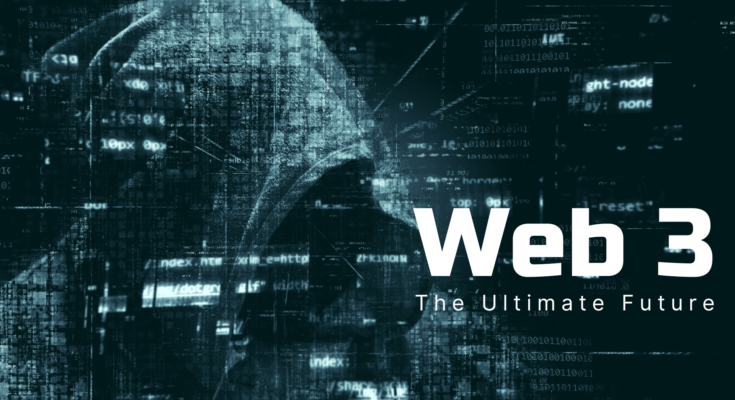What is Web3 and how is it different from Web2?
Web3 is the next generation of the internet that builds upon Web2. The term “Web3” refers to the decentralized web, where users are in control of their data, and blockchain technology is used to enable peer-to-peer interactions. In contrast, Web2 refers to the current state of the internet, where users are not in control of their data, and a few tech giants own and control the system. Web2 enabled the development of social media, e-commerce, and cloud computing, but it is still a centralized system.
Web3, on the other hand, is designed to provide more privacy, security, and ownership of data to users. Web3 presents a shift from the current internet model to a more democratic and decentralized system. It allows individuals and organizations to take control of their digital lives and ensures that user data is more secure and less vulnerable to attacks.
The role of blockchain technology in Web3
Blockchain technology is a critical component of Web3. It enables trust and transparency in a decentralized web by creating a distributed ledger that records all transactions and interactions on the network. Blockchain technology ensures that no single entity has control over the network, and it enables secure peer-to-peer transactions. One of the key features of blockchain technology is that it creates an immutable record of all transactions, which means that once data is recorded on the blockchain, it cannot be changed or deleted.
This makes the blockchain an ideal platform for recording sensitive data such as financial transactions, identity information, and medical records. Blockchain technology also enables the creation of smart contracts, which are self-executing contracts with the terms of the agreement written into code. Smart contracts automate processes, reduce the need for intermediaries, and ensure that transactions are executed according to the agreed-upon terms.
Decentralization and its impact on data privacy and security
Decentralization is a key aspect of Web3 that enhances data privacy and security. In a centralized system, user data is often stored in a central server that can be accessed by a few people who own and control the system. However, in a decentralized system, data is stored in a distributed manner, where users control their data and can choose to share it with others. This ensures that user data is more secure and less vulnerable to attacks.
With a decentralized web, users can take control of their data and decide who has access to it. Decentralization also eliminates the need for intermediaries such as banks, social media platforms, and other third-party services, which often collect user data and monetize it. With a decentralized web, users can conduct transactions directly with one another, reducing the need for intermediaries and enhancing privacy and security.
Opportunities for developers and entrepreneurs in the Web3 ecosystem
Web3 offers a vast array of opportunities for developers and entrepreneurs. The decentralized nature of Web3 presents an opportunity to create new business models and services that rely on blockchain technology. Developers can create decentralized applications (dApps) that run on Web3 platforms, while entrepreneurs can create new decentralized marketplaces, payment systems, and social networks.
Web3 platforms such as Ethereum, Polkadot, and Cardano enable developers to create smart contracts and decentralized applications that run on the blockchain. These dApps can be used to create decentralized finance (DeFi) platforms, non-fungible tokens (NFTs), supply chain management systems, and more. Entrepreneurs can also take advantage of the opportunities presented by Web3 by creating new decentralized marketplaces, payment systems, and social networks.
Challenges facing Web3 adoption
While Web3 presents many opportunities, it also faces several challenges that may hinder its adoption. One of the key challenges is the lack of user-friendly interfaces and experiences. Web3 applications can be complex, and many users may not be familiar with blockchain technology. Another challenge is the scalability of Web3 platforms. Blockchain technology has limitations in terms of the number of transactions it can handle, which can lead to slow transaction processing times and high transaction fees. Another challenge facing Web3 is the issue of regulatory uncertainty. Governments and regulatory bodies are still grappling with how to regulate Web3 technologies, which can create uncertainty for developers and entrepreneurs.
Web3 and the future of the internet
Web3 represents a paradigm shift in the way we think about the internet. It presents a more democratic, decentralized, and transparent web that empowers users and reduces the power of tech giants. With Web3, users can take control of their data, privacy, and security, and conduct transactions directly with one another without intermediaries.
The rise of Web3 technologies such as blockchain, smart contracts, and decentralized applications presents a new frontier for developers and entrepreneurs to create new business models and services that were not possible in the Web2 era. Web3 has the potential to disrupt industries such as finance, supply chain management, social media, and more. As the adoption of Web3 technologies continues to grow, it is likely that we will see a shift toward a more decentralized and equitable internet.
Real World Web3 Use cases
Web3 applications are already being used in various industries, demonstrating their potential to transform the way we interact and transact online. Decentralized finance (DeFi) platforms built on blockchain technology are democratizing access to financial services, blockchain-based gaming platforms are creating new opportunities for gamers to earn rewards and own in-game assets, and supply chain management platforms are enhancing transparency and reducing the risk of fraud. These are just a few examples of the real-world use cases of Web3 applications, and as adoption continues to grow, we can expect to see more innovative use cases emerge, shaping the future of the decentralized web.
Web3 to reshape industries and societies
Web3 has the potential to reshape industries and societies by enabling decentralized, transparent, and secure interactions and transactions. By leveraging blockchain development solutions, Web3 can eliminate intermediaries, reduce transaction costs, enhance trust and transparency, and democratize access to various services. This can create new opportunities for businesses and individuals, particularly in industries that have been traditionally controlled by large corporations or centralized institutions.
Furthermore, Web3 can enable the creation of new business models, such as decentralized autonomous organizations (DAOs), which can distribute ownership and decision-making power among community members. This has the potential to shift the balance of power and create more equitable and democratic systems. As Web3 continues to evolve and gain adoption, we can expect to see a significant impact on industries and societies, potentially transforming the way we interact and transact online.
Conclusion
In conclusion, Web3 is the next evolution of the internet, and it has the potential to revolutionize the way we interact with each other and conduct business online. With Web3, users are in control of their data, and transactions are secure and transparent. Blockchain technology, smart contracts, and decentralized applications are at the core of Web3, and they present a new frontier for developers and entrepreneurs to create new business models and services.
However, Web3 also faces several challenges, including user adoption, scalability, and regulatory uncertainty. Despite these challenges, the future of the internet is likely to be decentralized, and Web3 development will play a critical role in shaping the future of the web. As more people begin to explore the opportunities presented by Web3, we are likely to see a new wave of innovation and creativity that will shape the future of the internet.




